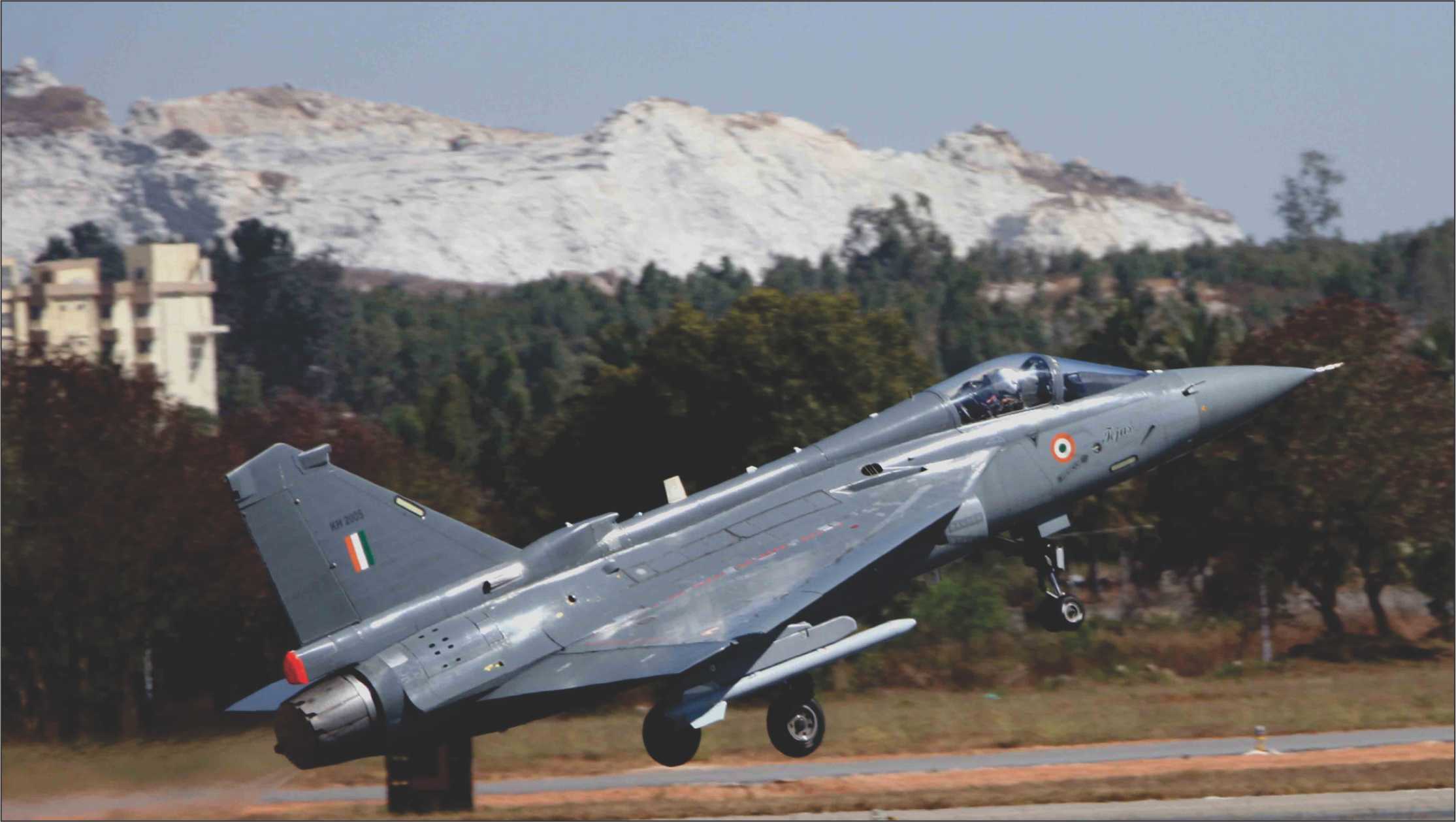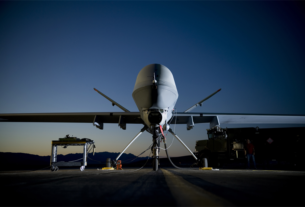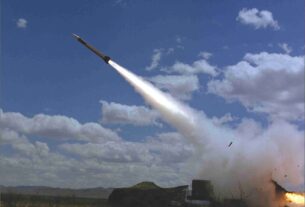Indian aerospace sector
In the context of the changed political landscape in New Delhi, there is a hope and optimism that the hitherto slow moving Indian aerospace sector could script a “success story” by replacing IT sector and software services industry as the “sunrise area” of the Indian economy in none too distant a future.
With the Narendra Modi led Government initiating pro-active measures to turn India into a thriving hub of the defence and aerospace manufacturing, opportunities galore are opening up to position India as an aerospace power of global standing. But then for this to happen, there should be a radical transformation of the regulatory mechanism and policy measures at the ground level followed by “incentives and encouragement” to the new players keen on entering the aerospace production sector of the country. Clearly and apparently, India should put its act together especially in terms of mastering new and innovative technologies, up-scaling its raw materials development capability, refining its precision manufacturing base and evolving a sound certification process to turn the country into a vibrant aerospace hub.
According to the market research and consultancy firm Price Waterhouse Cooper (PWC) the Indian aerospace sector is in a state of flux. “The Indian aerospace industry is one of the fastest growing aerospace markets in the world with an expanding consumer base comprising airlines, businesses and high net worth individuals. The rapid growth of the industry has attracted major global aerospace companies to India. All segments in the aerospace industry including military, aviation and space are showing significant growth”, according to PWC report.
But then whether the increase in FDI (Foreign Direct Investment) into the Indian defence and aerospace sector from 26% to 49% would be attractive enough for global defence and aerospace giants to invest in India to set up joint ventures, it is difficult to forecast at this point of time. For long industry bodies in India have been driving home the point that a restriction on FDI flow is a major impediment in the growth of the aerospace and defence sector of the country. A study by the IT industry body NASSCOM (National Association of Software and Services Companies) estimates that country’s aerospace services industry would touch US$4.2-billion by 2020.
There are several factors driving the growth of the aerospace sector in India. These include both macro and micro factors such as strong economic growth that resulted in the rapidly growing domestic aircraft demand, liberalisation of policies, emergence of a strong domestic manufacturing base, cost advantages, a well educated talent pool as well as the advanced research and engineering facilities being set up in the country by the global aerospace and defence majors.
Aero engines
Against this backdrop, the recent suggestion by Air Chief Marshal Arup Raha, Chief of the Indian Air Force (IAF), to turn Koraput in the eastern Indian state of Orissa into the undisputed aero engine capital of the country should be taken up seriously to give a new thrust and direction to the Indian aerospace sector. Incidentally, Koraput houses the manufacture, repair and overhaul unit for engines of Russian origin set up by the India’s state owned aeronautical major HAL. Mastering the aero engine technology, though a challenging task involving a huge investment could provide an opportunity for India to emerge as a front ranking aerospace power. For only a handful of countries in the world today possess wherewithal and resources to design, develop and produce both civilian and military grade aircraft power plants.
For one developing aircraft power plants of various “categories and specifications” domestically would imply an end to the outgo of a massive foreign exchange involved in the import of aero engines for military and civilian uses. Moreover, the plan to transform India into a thriving centre for the production of aero engines would prove to be a major game changer by enhancing the skill level, technological capability and precision manufacturing base of the Indian industry that could actively participate in the production of aero engine from ground zero.
Of course, the resources built and expertise developed for the Kaveri engine meant to power the home grown, fourth generation supersonic fighter aircraft Tejas LCA (Light Combat Aircraft) could very well be exploited to create a technological and industrial base for the production of aero engines within the country. Of course, Kaveri engine is yet to develop a thrust sufficient enough to propel Tejas. But there is no denying the point that the ground covered so far in developing this engine could provide a big thrust forward to the quest to develop aero engines domestically.
In a major move, HAL has come out with a proposal to join hands with the public sector Bharat Heavy Electricals Limited (BHEL) and DRDO to set up a joint venture to design, develop and manufacture gas turbines for a variety of end uses in both the civilian and defence spaces. This cannot but be a win- win combination for mastering the complex technology of aero engines. Both HAL and BHEL have expertise in license producing gas turbines of different categories. And DRDO is looking at an opportunity to co-opt a global aero engine major to take forward the development of Kaveri to its logical conclusion.
It would be in the fitness of things for such a venture to rope in a private player in addition to seeking the assistance of Indian Space Research Organisation (ISRO) in some of the critical technology areas to lay the firm foundation for the gas turbine development in the country.
“India’ aerospace industry is only 40-50 years old in terms of technology and still very far away in terms of very advanced technology. In engines, there is R&D going on but we have yet to see a final product. Engines are three to four times more complex than other technologies and don’t come cheap. We have still to catch on,” says Ramaseshan Satgopan, head of the aerospace engineering practices at the IT firm Mahindra Satyam.
Perhaps the most significant development that augurs well for the growth of the Indian aerospace sector is the decision of IAF and HAL to sink their differences and move forward in unison and work together. For long IAF, the largest captive customer of HAL, had complaints galore about HAL’s developmental strategy, quality level, delivery schedule and life cycle support. The MoD under new government should see to it that both HAL and IAF ceased indulging in the acrimonious “blame game”. It is in the fitness of things that both HAL and IAF have discussed in depth the issues relating to indigenisation, quality and delivery timeliness that are both complex and challenging in the context of the demands of supply chain, transfer of technology and shortage of talented human resources nagging the Indian aerospace sector.
Self reliance
In a major move towards infusing a spirit of self-reliance in the Indian aerospace sector, the Indian government has taken a bold decision to involve country’s private sector in a big way in mastering the technological expertise to build military aircraft in keeping with the “Make in India” initiative. In this exercise, HAL for long considered synonymous with the Indian aerospace saga, has been kept out with a view to make room for a private venture. And Tata Advanced Systems Limited (TASL) as well as Airbus Defence and Space have announced a joint bid for the supply of 56 transport aircraft to IAF which is looking at replacing its ageing fleet of Avro aircraft. If this joint venture succeeds in winning the contract, the Airbus will supply the first 16 of its C295 medium transport aircraft in flyway condition with the remaining 40 to be manufactured and assembled by TASL in India. If this proposal assumes a practical shape, it would be a big next step for Tata Group, which also happens to be a supplier for components and systems for global aerospace firms like, Sikorsky, Lockheed Martin and AgustaWestland. Incidentally, it will be for the first time that the company would be building an entire aircraft virtually from scratch at its manufacturing unit in India.
The Swiss aircraft major Pilatus Aircraft Ltd, which has on hand a contract to supply 75 PC-12 basic trainer to IAF, has announced a partnership with TASL for the assembly of PC-12 aero structures at its facility at an aerospace SEZ on the outskirts of Hyderabad. The pact covering a period of ten years is basically aimed at delivering the first complete PC-12 new generation aero-structure by 2016.
IAF has so far received more than 50 of the PC-12 basic trainer from Pilatus Aircraft Ltd. However, the clamour of IAF for the import of another 106 of this Swiss origin basic trainer could send out a negative signal for the indigenous efforts to develop a basic trainer. It is high time that IAF ends its fascination for the imported flying platforms.
Clearly and apparently, Indian private industrial players active in the aerospace sector are slowly acquiring maturity for globally competitive operations. For instance, Belgaum based AEQUS Aerospace SEZ (Special Economic Zone) has notched up the distinction of being the Tier one supplier to Airbus Industries. The current strength of AEQUS lies in aero structures and actuation systems. AEQUS is a full fledged aerospace eco system boasting a range of facilities including manufacturing and surface treatment. Eventually, it is planned to develop this aerospace SEZ into a one stop shop offering design to build services-right from concept design to finished products-and provide an entire range of technological support and services that are unique to the aerospace sector.
In a robust boost to private participation in the Indian defence sector, Pipavav Defence and Offshore Engineering plans to set up its main integration facility for manufacturing missiles and torpedoes in Hyderabad. According to a spokesman of the company, it is looking at tie ups with local firms in and around Hyderabad working in the sub systems design and manufacture of missile and torpedo parts. The firm has already entered into a strategic partnership with Swedish defence and aerospace firm Saab in key technology areas including combat management systems and missiles.
In a major breakthrough for the Indian aerospace sector, the Mahindra Aerospace promoted by the Mahindra Group, has been allowed to sell its Australian origin aircraft in India as it has received the necessary mandatory clearance from the Indian regulator. “The Aviation Ministry has cleared a few norms for certification which will finally allow us to sell our made in Australia planes in India,” said Ananda Mahindra, Chairman of the Mahindra Group. In 2009, Mahindra group announced its plan to be a leading player in the aerospace business by acquiring 75% stake in two Australian aerospace firms as part of its to plan to manufacture aircraft and allied components to service the global market. These Australian made utility aircraft named Mahindra Gipps have a seating capacity ranging from five to ten. Mahindra Aerospace has also a plan up its sleeve to take up the production of these aircraft at its Indian facility sometime in the future.
Policies
Any attempt to establish the Indian aeronautical industry as a meaningful player in the high technology and highly competitive global market needs a clear change of strategy. It is here that the Indian Government can play a pro active role through a slew of industry friendly policies. As it is, the Indian Government is expected to spend upwards of US$200-billion over the next two decades to meet the needs of IAF. The industry is keen that the Government come out with a comprehensive national aerospace policy followed by the creation of an Indian aeronautical commission on the lines of the highly successful Space Commission.
According to R K Tyagi, Chairman of HAL, the setting of an aeronautical commission will ensure greater cohesion, synergy, understanding and speeding up of the decision making in aerospace related activities.
As things stand now, India is all set to emerge as the third largest aviation market in the world by 2020. And to meet the growing manpower requirements of the sector, GMR Group, a leading global player in airports development, has announced its plans to set up an aerospace training hub at Rajiv Gandhi International Airport at Hyderabad. Meanwhile, the granting of infrastructure status to the slow moving, Indian MRO (maintenance, repair and overhaul) industry could be exploited to place India as a vibrant hub of MRO industry. Incidentally, the rapid growth of civil and military aviation is expected to help MRO realize 10% annual growth rate over the next one decade. But for now, Indian MRO industry is lagging behind its counterpart in West Asia and South East Asia. High incidence of taxation from multiple points continues to be the bane of Indian MRO industry.
The ruling dispensation in New Delhi should make it a point to give utmost priority to the task of turning India into a front ranking aerospace power to sustain the emergence of India as a an economic, military and technological power in the years ahead. Without doubt, the need of the hour is to provide a new direction and fresh thrust to the Indian aeronautical sector, which, had for many years, remained in a state “stagnancy and lethargy” on account of the “stifling stranglehold” it was subjected to by the political leadership of the country compounded further by a lack of policy framework designed to handhold and support the sector to move ahead.
Added to that, the myopic vision of the IAF, which is rather keen on buying the battle proven “glitzy fighting equipment” rather than supporting the challenging endeavour of developing the defence hardware indigenously-from scratch-contributed in its own way to the current poor state of the aeronautical industry in the country. It is high time IAF bats for indigenous development to insulate the country against a variety of shortcomings and risks associated with the imported defence hardware.
Similarly, the political leadership of the country should display maturity, wisdom and sagacity to support the all round growth of the aerospace sector in the wider national interest. Total self reliance should be the mantra of the pathway charted out for the growth of the aerospace sector.
It is estimated that over the next five years, the Indian aerospace sector could open up an opportunity for a job boom and spell massive opportunity for the domestic design and manufacturing industry. However, the predicted rapid growth of the Indian aerospace sector would be subject to the easy access to technology, raw materials development capability and the evolution of a sound certification process.
Modi Government should not lose time in initiating an action plan to turn HAL into a forward looking, globally competitive Indian aerospace enterprise. Following the failure of HAL to give a new direction to the Indian aerospace sector, an expert committee led by former Cabinet Secretary B K Chaturvedi had recommended restructuring HAL to make it more agile and responsive to the needs of the Indian defence forces. The obsession of HAL with licensed production did stifle the indigenous talent for design and development of aerospace systems. Added to that poor quality control and lack of advanced technological systems to run its projects queered the pitch for HAL. Similarly, HAL’s total focus on defence to the exclusion of civil aviation proved to be a major drawback for the growth of the Indian aeronautical industry.
Unfortunately, due to absolute control to which HAL was subjected to by the short sighted defence bureaucracy, the operational philosophy and functional thrust of HAL meant that it could not transform itself into a forward looking aerospace hub of global standing. Further
However the failure of HAL and other state owned defence public sector units to meet the needs of Indian defence forces led to the opening up of country’s aerospace and defence sector to private participation. But this policy intention has not been matched by the creation of favourable conditions at the ground level. Of course, now there is a growing realization that India would need to look beyond HAL to speed up the growth of the national aerospace sector that has the potential to exert a “force multiplier” effect on the national economy.
As such, the new ruling dispensation in New Delhi should look at creating a policy framework to incentivise and encourage the speedier participation of privately owned industries in the aerospace sector of the country. There is no denying the point that small and medium industries have a vital role to play in the rejuvenating country’s aerospace. That a small enterprise can make a big contribution to the Indian aerospace sector is proved beyond any shade of doubt by the Bangalore based JS Precisions which has been the sole manufacturer of Carrier Bomb Light Stores (CBLS) assemblies which are used for training pilots of Jaguar and MiG series of aircraft in service with IAF. It has also been manufacturing a number of components for SU-30 MKI fighter and Hawk. The company also exports spares to Sri Lanka and USA.
However the grim ground reality is that everything is not hunky dory with the Indian aerospace sector. For instance a recent story carried in a frontline English daily quotes a confidential report as saying that the to turn Indian aerospace sector into a self reliant venture, there is a need for a massive overhaul of higher education and military research and manufacturing. This fact filled report prepared by a seven member panel headed by Air Marshal M Matheswaran, the then deputy Chief of Integrated Defence Staff (IDS) has come down heavily on DRDO, HAL and other stake holders for their multiple failures on a variety of fronts in so far as turning India into aircraft manufacturing hub is concerned. Rightly and appropriately, this report strongly recommends setting up a National Aeronautical Commission to speed up the coordination between civilian and military aviation sectors and chalk out a long term strategy for self-reliance in the critical aerospace sector.
At the end of the day, there is a growing realization that challenges and opportunities ahead of the Indian aerospace sector are manifold and through a proper strategy and well planned ground work India could transform itself into an aerospace power of global standing.
The Government led by Narendra Modi which has shown its unflinching commitment to self reliance in defence and manufacturing sector should demonstrate a strong political will to give a upward thrust to the Indian aerospace sector.




